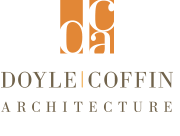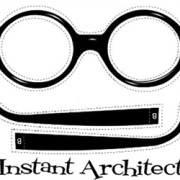Pin This
I think we can all agree that there is an overabundance of social media platforms out there… Facebook, Twitter, Tumblr, Pinterest, Instagram… the list goes on and on… and on… the sheer volume of options and apps out there is overwhelming to say the least. I, for one, have always been a little shy when it comes to delving into the world of social media. While I can’t say that I have ever tweeted or tumbled anything (this is actually my first attempt at a blog), recently I have come to realize how certain applications can play a very current and effective role in the realm of architecture and design.
This realization occurred while planning my daughter’s first ever birthday party. Using Pinterest, I was able to not only find some awesome ideas for creating a ‘polka-dot’ themed party, but i was also able to enhance those ideas – interpreting them in my own way and modifying things to compliment my own style, design preferences and baking abilities. Further, I was able to share my ‘board’ with my husband and my sister (a graphic designer) to gain their input. Needless to say, the party was a hit (smash cake and all) and I will most likely use Pinterest in the future (maybe a ‘Mustache Bash’ for my son’s third birthday?)
Anyway, back to how this applies to the architecture industry…
In the past, we have often encouraged clients to bring in books, photographs and magazine clippings of designs, styles, layouts, color schemes, etc., that appeal to them. Apps like Pinterest and Houzz can now take this to a new level by becoming useful tool to enhance the Client-Architect relationship rather than just another social media platform. The number of photos available on these sites is endless – there really is something for everyone. The opportunity to share or ‘follow’ a board/ideabook and comment on a particular image (“I love the style of these cabinets but hate the color”) adds another layer of useful information that can be applied to the design of a project.
A lot of what we do as architects in the early stages of design development relies on our understanding of how a space will be used and who will be using it. The most successful projects are the ones in which the clients needs are met and their expectations are exceeded. The more information we have upfront with regards to style, color, design elements, spatial needs, use, likes/dislikes, etc., the more we can push and enhance the design, taking it to a new level, exceeding expectations. So start your Pinterest board or Houzz ideabook today (if you haven’t already done so)… we’d love to see it!





This is great! I 100% agree — the more information you can gather from a client regarding their likes and dislikes, the more you will understand their vision and create a streamlined and efficient working relationship.